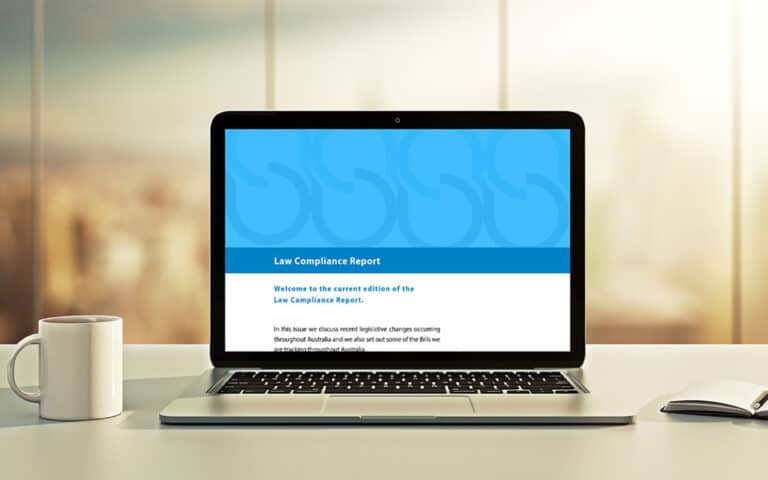This article applies to organisations that operate schools in Victoria.
Education and Training Reform Amendment (Protection of School Communities) Act 2021 (Vic)
The Education and Training Reform Amendment (Protection of School Communities) Act 2021 No. 24 (Vic) (the Amending Act) commenced on 28 June 2022 and made amendments to the Education and Training Reform Act 2006 (Vic) (the Act).
Background
The Amending Act has inserted a new Part 2.1A (Protection of school communities) in the Act to create a system to allow school communities to make orders to protect the school community from harmful, threatening or abusive behaviour.
Broadly, an authorised person has the power to make an immediate school community safety order (ISCS order) to direct a person to leave and remain off a school-related place if the person poses an unacceptable and imminent risk of harm to a member of the school community. An authorised person is defined to include a principal of a registered school, registered proprietors of non-Government schools, and the Secretary to the Department of Education and Training for Government schools.
An authorised person can make an ongoing school community safety order (OSCS order) to prohibit a person from entering the school grounds or school-related places, or prohibit them from engaging in inappropriate conduct, if the person is posing an unacceptable risk of harm to a member of the school community.
The two-tiered protection scheme recognises that there may be circumstances where immediate action must be taken to prevent imminent harm from occurring, where there is no time available to undertake an ongoing order.
Immediate School Community Safety Order
The new section 2.1.A.3 of the Act allows for an authorised person to make an ISCS order that prohibits a person from entering or remaining on any school-related place if certain grounds are met. Such an order can be made if the authorised person reasonably believes that the person poses an unacceptable and imminent risk of causing:
- harm to a member of the school community;
- significant disruption to relevant school activities; or
- interfering with the wellbeing, safety or educational opportunities of students at the school.
The order may only be made after the authorised person considers any vulnerability of the person that the authorised person is aware of, and whether the order will be the least restrictive means available to address the grounds on which the order is made.
An ISCS order cannot be made to a person who is under the age of 18, or person that is a student or a staff member of the relevant school.
An ISCS order may be made orally or by written notice. When provided orally, the authorised person must tell the person to which the order applies, the grounds for making the order and the period in which the order will be in force. Following an oral notice, a written notice must be personally handed to the person or sent to the postal address or email address of the person. The written notice should contain the following information:
- the name of the person to whom the order applies;
- the school and school-related places the order applies,
- the grounds on which the order is made;
- the period the order remains in force;
- any conditions attached to the order;
- any actions that the person to whom the order applies may take to have the order revoked;
- the orders that may be made by the magistrate if the person fails to comply with the order;
- a description of the behaviour of the person to whom the order applies that satisfied the grounds for making the order; and
- the effect of the review of an immediate order.
In the circumstances in which a written order is not able to be given to the person to whom the order applies, the authorised person must keep a written record of the order that was made, the reason the written order was not able to be given to the person and a description of the person to which the order was made.
Ongoing School Community Safety Order
Under new section 2.1A.15, an authorised person will be permitted to make an OSCS order to prevent a person from engaging in certain activities such as entering or remaining on any school-related place, approaching a staff member within 25 metres inside or outside of a school-related place, or telephoning, sending a message to, or otherwise contacting any staff member. An OSCS order may be made if any grounds under section 2.1A.17 are satisfied, including but not limited to the person behaving or being likely to behave in a disorderly, offensive or threatening manner, or making vexatious communications with, or regarding, a staff member at the relevant school.
OSCS orders will be required to contain the information outlined in section 2.1A.20, such as the name of the person to whom the order applies, the school and school related places, the terms of the order, the grounds of the order and the period to which the order applies. Section 2.1A.21 contains the procedure that will also need to be followed when making an OSCS order which includes the authorised person providing a written notice to the person to whom the order is proposed to apply and allowing 7 days for that person to make submissions regarding that proposed order.
Conclusion
Organisations that operate schools in Victoria should be aware of the new powers in place to protect the school community, by making an immediate or ongoing school community safety orders. Organisations should ensure that they comply with the new obligations during all steps of the process in implementing, reviewing and revoking the order, as discussed above.




